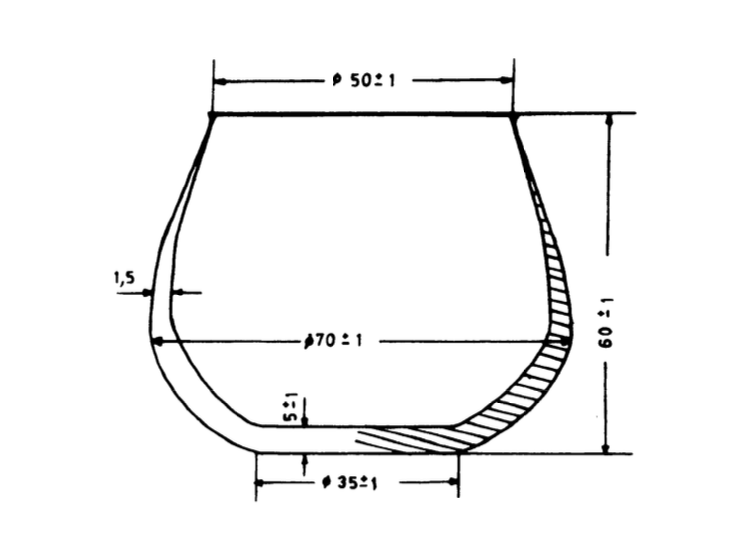It’s probably that you have ever seen them, but do you know why they are like this? Who decided their design? How to use them in the best way? Where to get them?
In the search for homogenizing the tasting of the extra virgin olive oil among the tasting panels of the different countries, they looked for the normalization of the glass in which the tasting was going to be done. And it was in June 1987, when the International Olive Council (COI), launched the COI/T.20/Doc. nº 5 standard, where it describes the specifications that said glass must have.
The glass’s morphology responds to these characteristics, it is adapted to the optimal sensorial analysis of an Extra Virgin Olive Oil (EVOO).
- The glass is in blue color, to avoid seeing the oil’s color, since this attribute can create prejudice among the members of a panel or a jury (in the case of contests).
- The glass is wide at the bottom for a greater stability and it can be more difficult the oil spillage. This wider surface also allows the oil to be perfectly heated by hand, or in the heaters used in the laboratories for this purpose, releasing all its flavor.
- The top of the glass is narrower, in order to capture the oil’s aromas, since they are very volatile.
The complement of the glasses is a glass cover used for avoiding the oil’s aromas to escape, called Watch Glass.
In regard to the dimensions that a standard glass has according to the IOC, we have:

Manufactured with dark glass, for not allowing to see the color of the oil, this glass has to be resistant so it is annealed to harden it. It should not contain any irregularities such as bubbles and deformities.
In order to make a right use of the glass, first, we must check out that they are completely clean. For this aim, unscented cleaning agents are used, and the glasses shall be rinsed until these soaps or detergents are completely removed.
The technique for using it, it’s the following:
- Introduce 15 ml oil into the glass.
- Hold the glass and the watch glass and heat the base, making small rotary abrasion movements with the palm of your hand.

- Tilt and turn the glass, so that the largest quantity of surface can be impregnated.
- Lift the «watch glass» up and perform the first olfaction, which is going to give us great information mainly in a summarized way, it will tell us if that oil smells good or if it smells bad. Immediately, the glass has to be covered in order to avoid losing the aromas.
- Perform all the needed olfaction (without saturating the senses), until being able to get conclusions.

- Put a small sip of oil into the mouth and spread out through all the oral cavity so that our taste buds can analyze it.

- Taking advantage of the fact that the oil inside the mouth reaches the perfect temperature to release organoleptic properties, we aspirate to analyze its flavor.
- Swallow the oil and analyze with this action, its itching, bitterness and astringency.
The tasting glasses prices vary according to the purchased quantities, including the price range from 3 to 6 euros.

